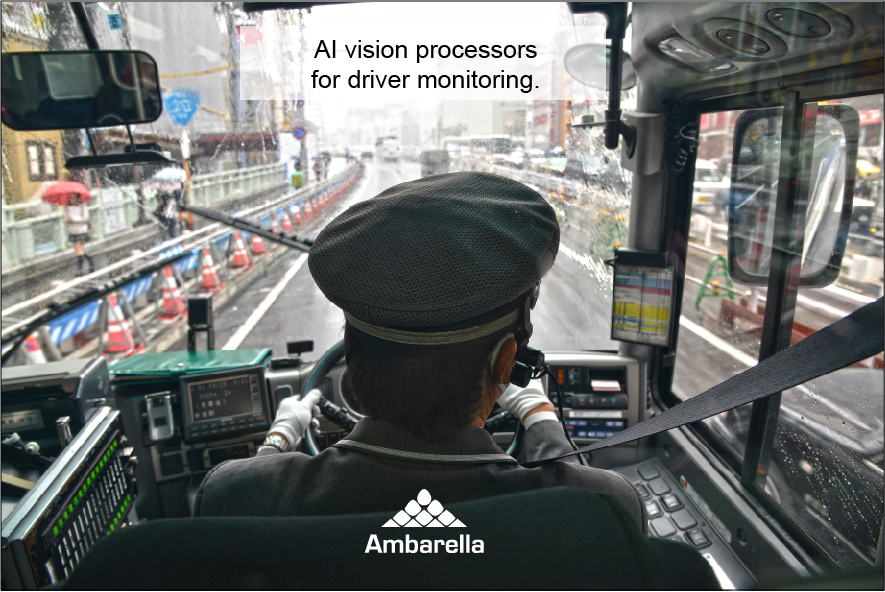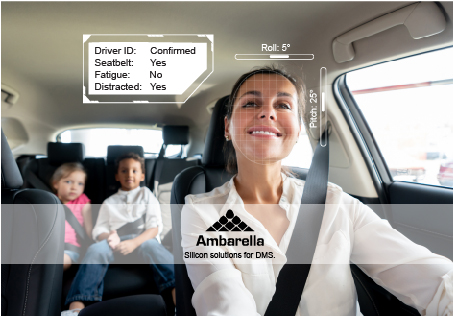
Our vision processors are at the forefront of a new wave of driver monitoring applications.
Encouraging drivers to pay attention to the road has always been a daunting challenge. Mobile devices provide a steady source of distraction, deadlines may push us to ignore the symptoms of fatigue, and our fast-paced lives often make multi-tasking too tempting to resist. As if that weren’t enough, recent advances in semi-autonomous technologies may inadvertently encourage distraction—drivers who trust that the vehicle is safely in control of navigation may place their attention elsewhere.

Unfortunately, the data is clear—failing to focus while driving can be lethal. According to the NHTSA, driver distraction accounts for around 10% of fatal crashes, with mobile phones playing a role in approximately 15% of those fatalities. Fatigue is more difficult to measure. However, the NHTSA estimates that approximately 90,000 police-reported crashes in 2017 involved drowsy drivers, leading to an estimated 50,000 people injured and close to 1,000 deaths. These accidents typically involve not only the occupants of the vehicle itself, but pedestrians and cyclists as well.
Numerous strategies have been deployed to help drivers stay focused—ranging from public service announcements to increased policing—with various degrees of success. However, a strategy that has emerged more recently involves the use of driver monitoring systems, often referred to as DMS systems. Installed in the cabin’s interior, these devices are designed to track driver behavior in real time, generating alerts whenever signs of distraction or fatigue are shown. In addition, related devices that monitor occupants seated in the passenger or rear seats, known as OMS systems, are also increasing in popularity. While DMS systems focus solely on the driver, OMS systems perform a variety of safety- and convenience-related functions, including customizing the seating area for comfort, tracking proper seat belt positioning, and even ensuring that small children aren’t accidentally left behind in the vehicle.

Ambarella offers dedicated silicon for both DMS and OMS applications. Typical features enabled by our vision SoCs include:
- DMS
- Real-time evaluation of the driver’s state, including distraction, emotion, and fatigue
- Validation of driver engagement
- Detection of eating, smoking, and more
- Seatbelt detection
- Driver identification
- Fleet operator monitoring
- Video streaming and/or recording for subsequent evaluation
- OMS
- Customized environment specific to individual occupants
- Lost object checks (e.g., cell phone)
- Security checks
- Alerts for children left behind in the vehicle
- Detection of unauthorized occupants

What are the advantages of DMS/OMS solutions based on our silicon?
- CVflow® high-performance edge AI processing
- Low power consumption for small form-factor cameras
- Support of latest monochrome and RGBIR sensors from a variety of sensor vendors
- Multiple camera support for implementing DMS and OMS with a single chip
- Simultaneous recording capability
What is Ambarella doing in the DMS/OMS space?
We are currently focusing on two major areas:
- Partnering with multiple DMS solution providers, and providing support in adapting our DMS reference design to their product specifications.
- Working with ODMs and Tier-1s to implement DMS solutions targeting passenger and commercial vehicles for pre-install and aftermarket installations.
Click here for more information on our computer vision chips.
For additional information on our DMS and OMS applications, please contact us.


